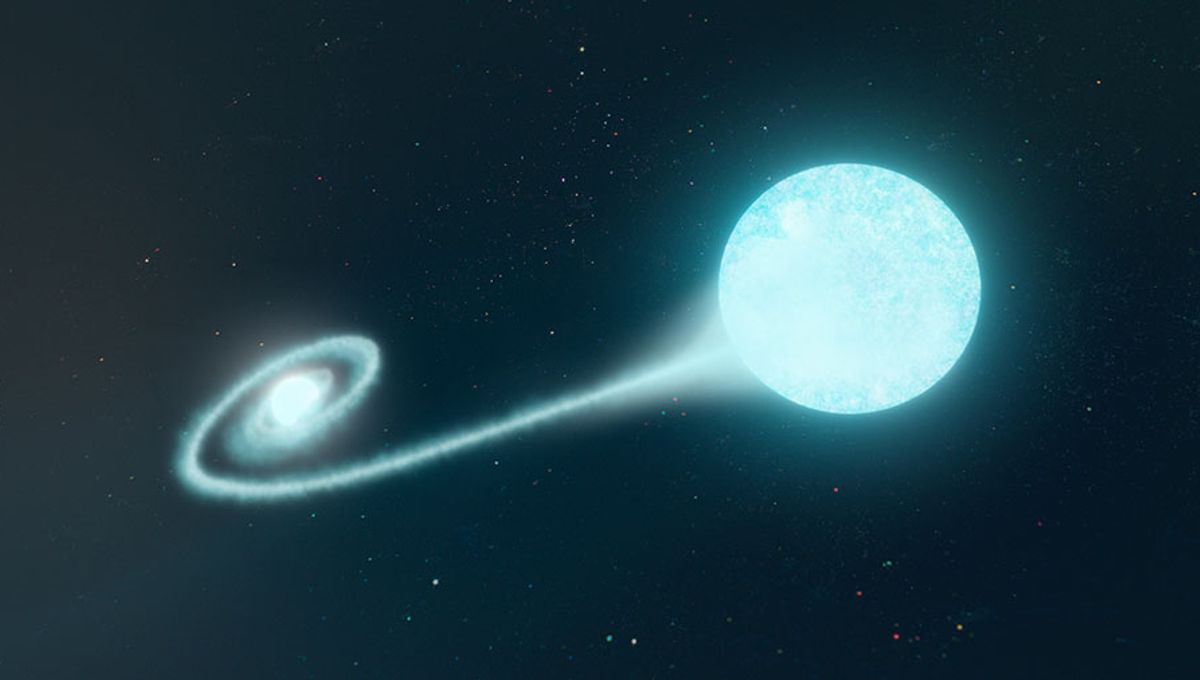
Astronomers have discovered six new “runaway” stars in the Milky Way. These are stars that move extremely fast and in an unusual direction, usually as the result of a supernova event. Two of the stars are among the fastest objects of their kind ever observed in the galaxy, including one that has the highest constant velocity.
The star J0927-6335 is moving at a whopping 2,285 kilometers (1,420 miles) per second. That’s equivalent to traveling from New York to Austin in just over one second. In fact, three of the six are faster than previously observed “hypervelocity” stars – stars that are traveling at speeds that exceed the escape velocity of the galaxy – speeding at over 1,000 kilometers per second, which is about four times faster than the average star in the Milky Way. The second fastest, J1235-3752, is moving at a very respectable 1,694 kilometers (1,053 miles) per second. That’s Chicago to San Antonio in one second.
These runaway stars are moving at incredible speeds but they are not technically the fastest a star can get in our galaxy. Star S0-2 is the fastest known ballistic object in the galaxy. It orbits Sagittarius A*, the supermassive black hole at the center of the Milky Way, and can reach speeds of 4,000 kilometers per second at the point of closest passage. However, S0-2 doesn’t keep that speed all the time, and on average is now in second place between J0927 and J1235.
But how did these stars achieve such great velocities that would otherwise require an enormous gravitational pull? They were kicked out in a dramatic explosion. For the four fastest stars, it was quite a peculiar explosion known as a “dynamically driven doubly-degenerate double detonation” – which is excellent alliteration but is usually shortened to D6.
In this scenario, two white dwarfs orbit each other, and one of the pair is stealing material from its companion. Beyond a certain threshold, the white dwarf becomes too massive for the heat inside to balance the gravitational force of all its mass.
At that point, it collapses on itself and explodes in a type of supernova called Type Ia (pronounced type one-A). These are well-known to scientists as they always have the same luminosity and so are used to estimate distances in the universe. And what of its companion? Well, that star is given a big kick and thrown into the galaxy at an extraordinary speed.
The runaway stars were discovered using the European Space Agency’s Gaia observatory. They are all white dwarfs and the fastest four have properties consistent with the D6 scenario. The team suggests the current data shows that most Type Ia supernovae would produce these runaway stars. If that is the case, the Milky Way has launched 10 million such stars into intergalactic space, and there should be a large number passing in the wider solar neighborhood – even white dwarfs from other galaxies.
Only a handful of these stars are known within the wider galaxy, and they are the brightest. This bias is a major source of uncertainty in understanding the birth of the population. Another unknown is where they individually come from. Despite Gaia’s great ability to track stars’ trajectories, there are still too many uncertainties for astronomers to trace them back to a specific supernova remnant. It is, however, certain that at these speeds, they will all leave the Milky Way in the future.
The study has been submitted to The Open Journal of Astrophysics and is available to read on the ArXiv.
[H/T: ScienceAlert]
Source Link: Fastest Runaway Star In Milky Way Discovered Moving At 2,285 Kilometers Per Second